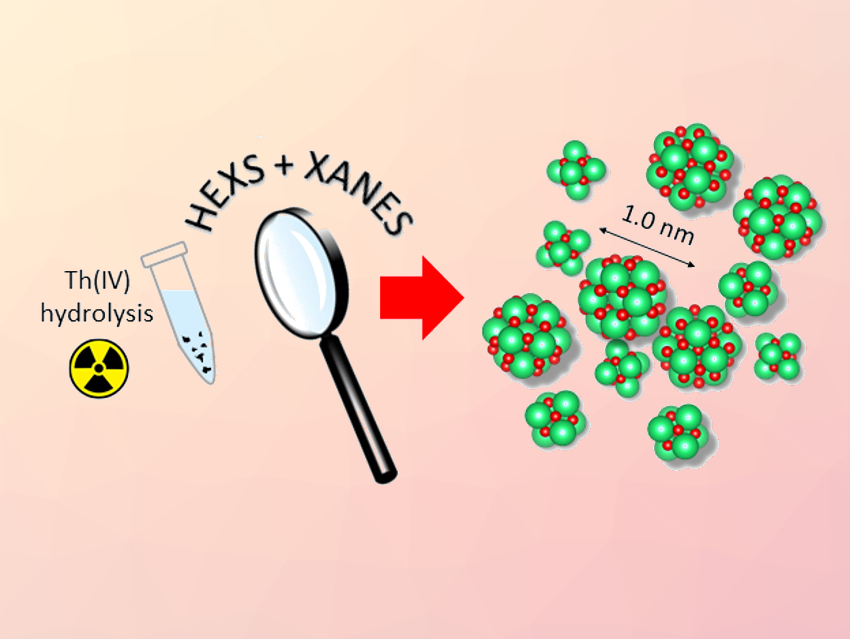Nanoparticles (NPs) containing actinides are poorly understood compared with NPs containing stable d-block elements. However, actinides have a known tendency to aggregate in the form of colloidal nanoparticles, which influence their environmental behavior. Thus, understanding their properties is important. ThO2 NPs, for example, can be formed by chemical precipitation, with sizes down to ca. 2 nm. For such particles, it is very challenging to precisely measure the structure.
Lucia Amidani, The European Synchrotron, Grenoble, France, and Helmholtz Zentrum Dresden-Rossendorf, Dresden, Germany, and colleagues have characterized both the short‐ and medium‐range order of ThO2 NPs obtained by chemical precipitation for the first time. For this, the team combined high‐energy X‐ray scattering (HEXS) and high‐energy‐resolution fluorescence‐detected X‐ray absorption near‐edge structure (HERFD XANES) analysis, supported by theoretical simulations.
These methods provided insight into the structures of ThO2 NPs at different stages of their formation. HEXS analysis revealed that the initial precipitate contains a large number of seeds for ThO2 NPs. Drying the precipitates at low temperatures (40 °C) gives mainly ThO2 NPs with sizes below 1.5 nm, while drying at around 150 °C promoted a recrystallization of the smallest units into larger NPs. The HERFD XANES measurements provided information about the short-range order in the NPs, with a high sensitivity to the local structure at the surface in small NPs. According to the researchers, this is important for understanding the interaction mechanisms of the NPs.
- The Application of HEXS and HERFD XANES for Accurate Structural Characterisation of Actinide Nanomaterials: The Case of ThO2,
Lucia Amidani, Gavin B. M. Vaughan, Tatiana V. Plakhova, Anna Yu. Romanchuk, Evgeny Gerber, Roman Svetogorov, Stephan Weiss, Yves Joly, Stepan N. Kalmykov, Kristina O. Kvashnina,
Chem. Eur. J. 2020.
https://doi.org/10.1002/chem.202003360


